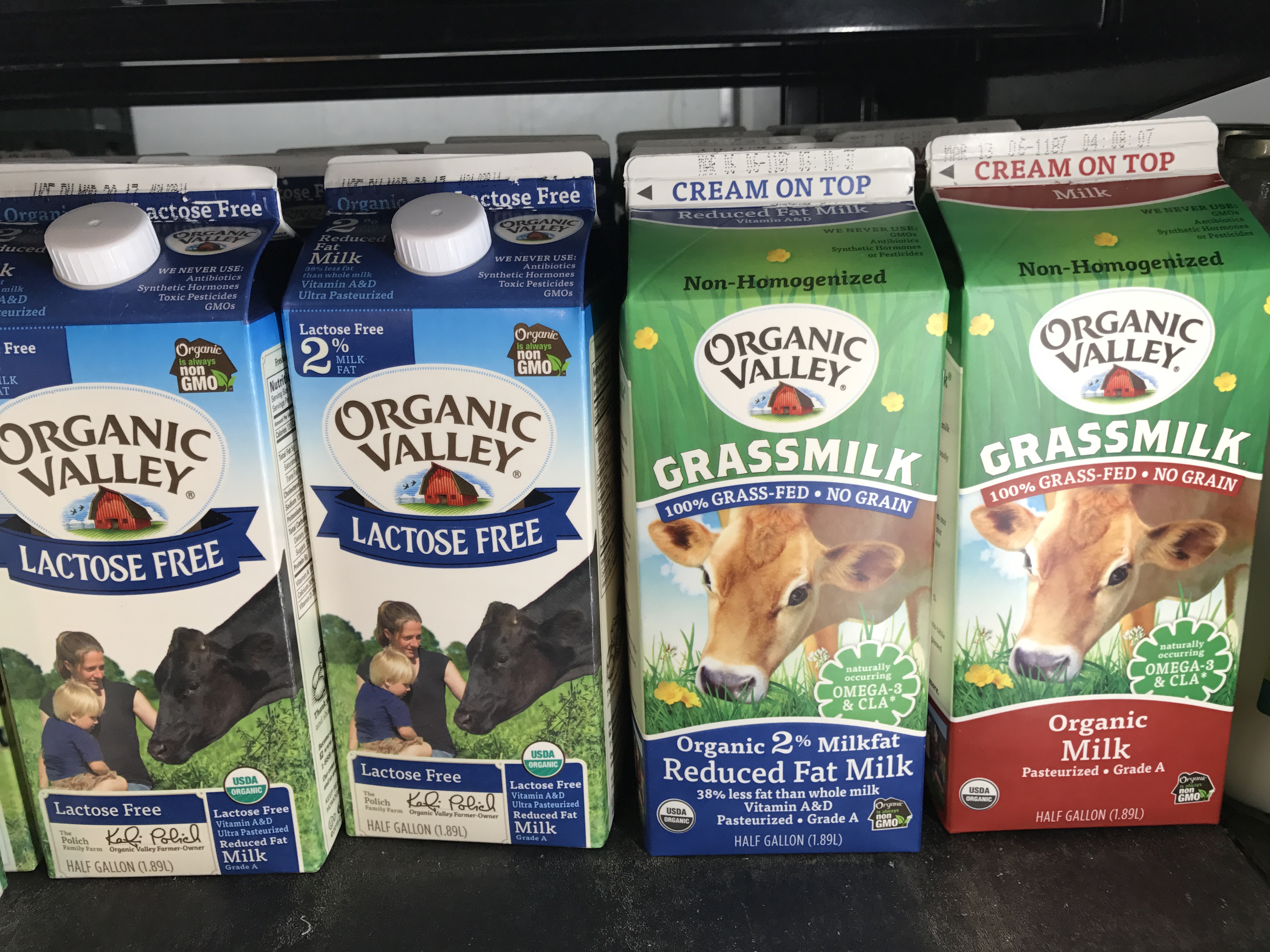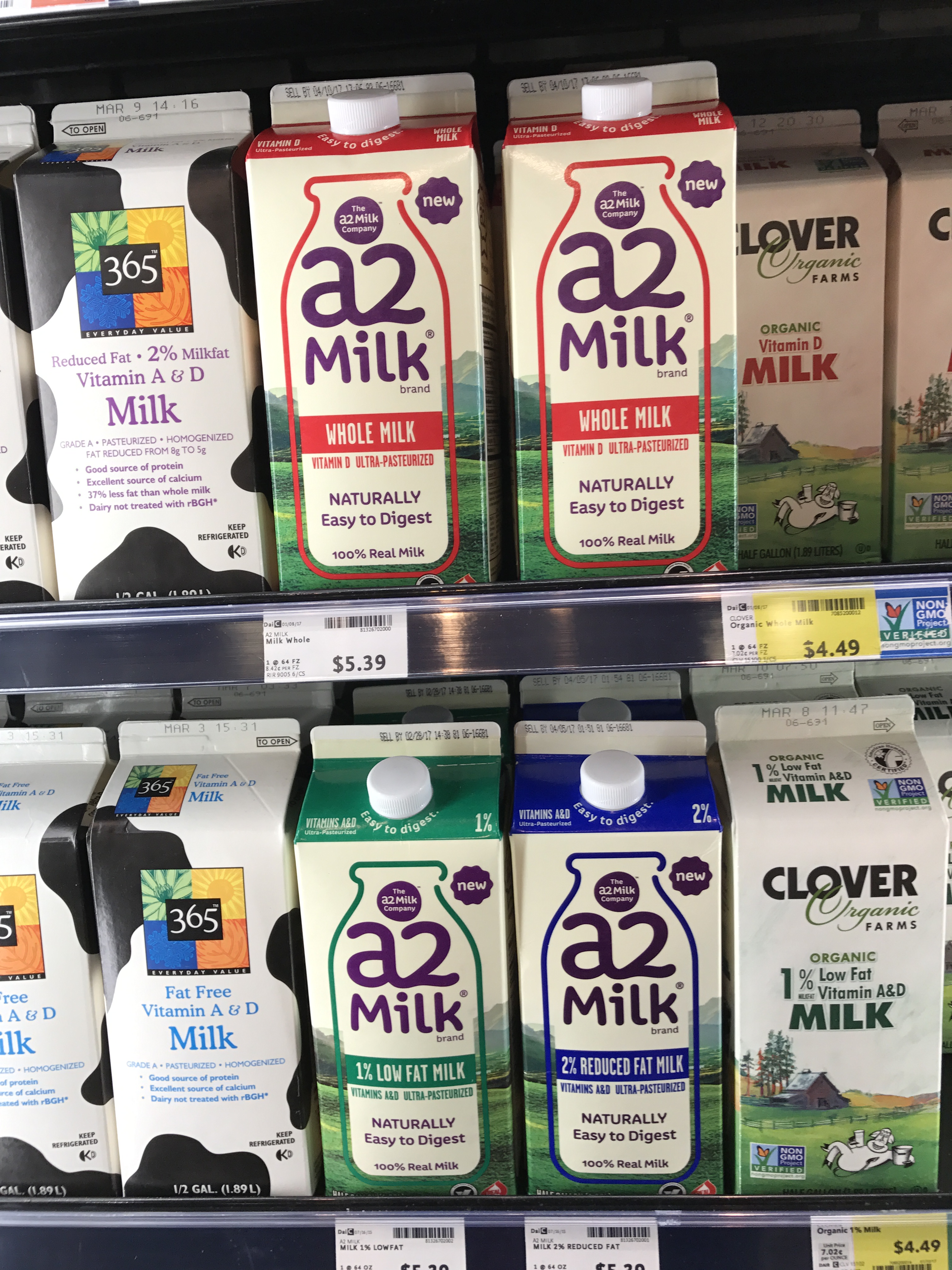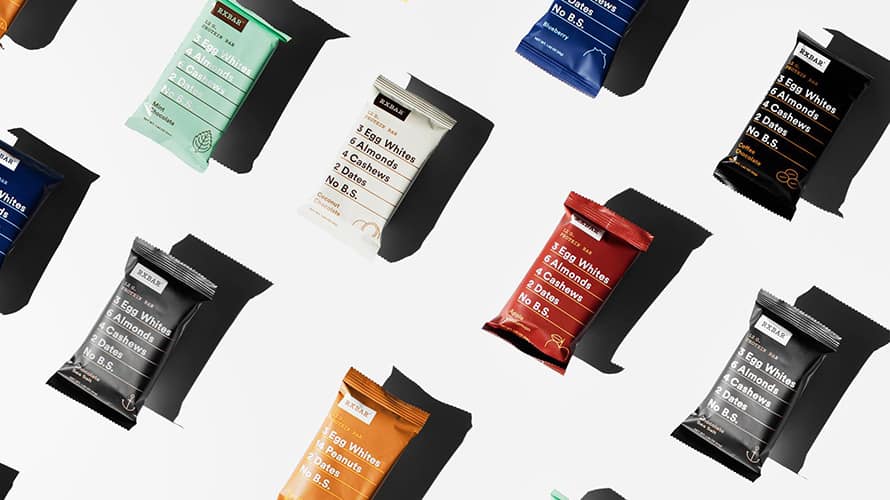
Milk. We’ve all seen the ads touting the benefits of milk – lots of calcium, happy cows, happier humans – yet dairy milk sales are down while non-dairy milk sales are up. Dairy producers are not taking that detail lying down and are competing with new products targeting niche consumers. All types of milk have equivalent amounts of calcium and vitamin D. How are producers marketing dairy milk? And what products are dairy producers offering consumers to reverse that trend?
Organic Milk – In the Beginning
I would argue that the organic movement really took off because of consumer awareness that the chemicals rBST and rBGH are used to stimulate milk production in lactating female cows. Growth hormones such as rBST and rBGH have nasty impacts on humans and they are not permitted in organic milk. Ditto antibiotics and pesticides. (I don’t have to spell out the problems with growth hormones, antibiotics, or pesticides, do I?) Throw in access to organic pasture (no chemicals sprayed here) and higher levels of conjugated linoleic acids (those good fats you keep hearing about) than conventional milk and you can see why the industry grew from 6,000 cows in 1994 to 255,000 cows in 2014.

Organic Grassmilk on the shelf at a NorCal Whole Foods
Grass-fed Milk – Next Gen Organic Milk
Only 30% of a cow’s diet must be grass to be considered organic (among other factors). To be labeled “grass-fed” or “grassmilk,” the producing cow must eat only grass. That means no GMO corn, GMO soy, or other junk that is fed to cows that are conventionally raised. The boon to the consumer that drinks grass-fed milk over conventional milk is double the alpha-linolenic acid (ALA) and five times more conjugated linoleic acids, a “good” omega-3 fat, than conventional milk. Will this nutritional advantage be enough to bring consumers back to cow milk dairy?
Low and Slow Milk – Old School Meets new School
Unlike other conventional milk producers, Top Line Milk Company in California’s Central Valley “does not separate, standardize or homogenize their milk.” The farm pasteurizes at their on-site creamery using the “low and slow” pasteurization method, or 30 minutes at 145°F (versus 161°F for 15 seconds for high heat pasteurization or two seconds at 280°F for ultra-pasteurized milk). The process is gentler on the milk and, like A2 milk, is said to be easier to digest. But the main draw is its old-fashioned style. The cream naturally rises to the top of this only whole milk product line and the low-heat pasteurization and swift cow-to-bottle, on-farm processing preserves the fresh flavor of the milk.
A2 Milk – Say What?
The latest entrant to the US milk scene is A2 milk. Sourced from the A2 Milk Company in New Zealand and available in the United States at some Whole Foods and Safeway markets, A2 milk speaks to consumers concerned about the type of dairy protein in milk, especially those who are unable to digest or are allergic to casein.
There are two types of milk protein: whey, which accounts for about 20% of milk’s protein, and casein, which accounts for about 80% of milk’s protein. Casein is further defined by its long amino acid chain. With A1, the beta casein histidine is at position 67 in the chain. A2 has the beta casein proline in that position.

A2 milk on the shelf at a NorCal Whole Foods
The type of casein found in a cow’s milk is passed down from generation to generation and varies with the breed. Holsteins, the predominant cattle breed raised in the United States, harbor A1 beta caseins. Other breeds, such as Guernseys, mostly harbor A2s. And A2 milk does not produce inflammatory compounds in the human digestive system.
The consequence of this small distinction in amino acid format may soon reverberate throughout the dairy industry. For anyone who has burped a baby, dealt with the digestive distress of intolerance to dairy milk or other maladies linked to inflammation, making cow’s milk more digestible would have incredible benefits to human health. Or the whole thing may be debunked and chalked up to effective dairy milk marketing. Until then, consumers can take comfort in knowing that the dairy industry is changing with the times, staying up-to-date on trends and competing for the milk consumer’s dollar.





